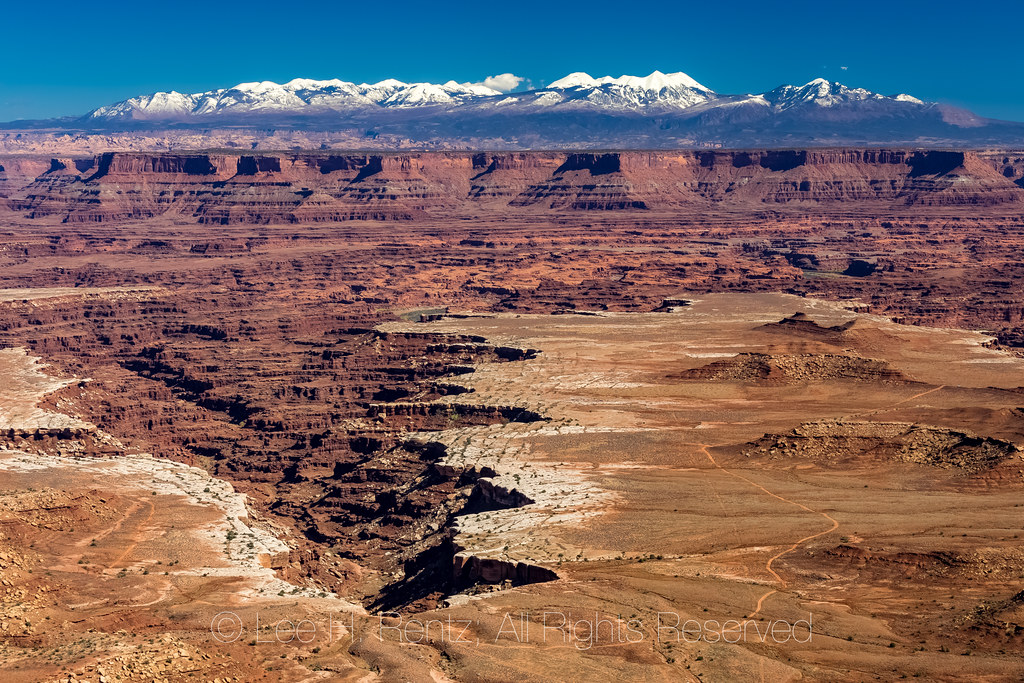Introduction: A Portal to Utah’s Wild Majesty
Perched high above a maze of sandstone canyons, cliffs, and winding valleys, Buck Canyon Overlook is a breathtaking vista point located within Canyonlands National Park, specifically in the Island in the Sky district. This awe-inspiring overlook offers panoramic views of the Buck Canyon, carved by the Colorado River and thousands of years of geological activity. From towering cliffs to expansive desert plains, visitors are greeted with a silent, powerful beauty that feels both eternal and immediate.
In this article, we dive into every aspect of Buck Canyon Overlook—from its geography and history to practical travel tips and common FAQs—crafted in a humanized tone to bring you closer to the natural heart of Utah’s red rock country.
1. The Geography of Buck Canyon
Buck Canyon Overlook is located within Canyonlands National Park, near Moab, Utah. It sits atop the Island in the Sky mesa, a flat-topped highland standing over 1,000 feet above the surrounding terrain.
From this point, visitors can gaze out over:
- Buck Canyon: A deep cut in the earth shaped by water erosion.
- La Sal Mountains in the background: Snow-capped peaks offering a stark contrast to the desert.
- White Rim Road: A rugged off-road trail snaking its way through the canyon floor.
- The junctions of the Green River and Colorado River, which together shaped this majestic landscape.
2. A Brief History of Canyonlands and Buck Canyon
Native American Presence
Long before it became a national park, this region was home to ancient Ancestral Puebloans, and later, Ute and Navajo tribes. Their petroglyphs, rock art, and remnants of dwellings are scattered throughout Canyonlands.
European Settlement
By the late 1800s, ranchers and explorers began naming and mapping the area. Buck Canyon was likely named for its abundance of deer (bucks) spotted near the water-rich canyon floor.
National Park Status
Canyonlands was established as a national park in 1964, largely thanks to conservationist efforts to protect the region’s stunning natural beauty. Since then, Buck Canyon Overlook has become a must-see spot for travelers seeking an accessible but unforgettable view.
3. What You’ll See at Buck Canyon Overlook
This overlook doesn’t disappoint. With minimal effort, you’re rewarded with a cinematic view that changes color and mood depending on the light and weather.
Red Rock Canyon Walls
The canyon walls stretch endlessly, painted in hues of rust, gold, ochre, and deep maroon—especially vivid at sunrise or sunset.
Sky Islands and Buttes
Erosional remnants like mesa tops and isolated rock towers (called buttes and pinnacles) add dramatic depth and dimension to the view.
Layered Terrain
The geology on display is a masterclass in Earth’s history, where each layer tells a story going back millions of years.
4. How to Get There
Location
- Nearest City: Moab, Utah (about 40 minutes away)
- Park District: Island in the Sky, Canyonlands National Park
- GPS Coordinates: 38.3766° N, 109.8782° W
Getting to the Overlook
- From Moab, take US-191 North.
- Turn left onto UT-313 W, which leads to Canyonlands National Park.
- Follow signs into the Island in the Sky district.
- Buck Canyon Overlook is located about 12 miles from the visitor center, off the Scenic Drive.
5. Accessibility and Facilities
One of the best things about Buck Canyon Overlook is its easy accessibility. Unlike many viewpoints that require strenuous hikes, this overlook is wheelchair-accessible and perfect for families with children or seniors.
Features
- Paved trail from the parking lot to the viewpoint
- Guardrails and viewing platforms for safety
- Interpretive signs explaining the geology and landscape
- Restrooms nearby (at other stops like the Visitor Center)
6. Best Times to Visit
Spring (March to May)
Expect comfortable weather and blooming desert wildflowers. Morning light is perfect for photography.
Fall (September to November)
Cooler temperatures make for ideal hiking conditions, and the low sun enhances the canyon colors.
Summer (June to August)
Hot and dry. Visit early in the day to avoid the heat. Sunscreen, hats, and water are essential.
Winter (December to February)
Chilly but serene. If it snows, the red rocks with a white dusting are absolutely magical.
7. Tips for First-Time Visitors
- Arrive early or late: To avoid crowds and capture the best light.
- Bring binoculars: Spotting wildlife or following the White Rim Road from above is more fun with them.
- Stay hydrated: The dry air can dehydrate you quickly, even if you’re not hiking.
- Respect nature: Don’t climb over railings or wander off the marked path.
- Leave no trace: Carry out everything you bring in.
8. Photography Guide: Capturing Buck Canyon
If you’re a shutterbug, this overlook offers endless inspiration. Here are some tips to elevate your photos:
- Golden Hour: Shoot at sunrise or sunset for the best light contrast.
- Wide-angle lens: Capture the vastness of the canyon in one frame.
- Foreground interest: Use nearby rocks or plants to add depth.
- Timelapse or drone (if permitted): Aerial shots, if legal and safe, can be stunning.
9. Wildlife and Natural Habitat
Although it might seem barren at first glance, Buck Canyon is part of a vibrant desert ecosystem.
You might spot:
- Desert cottontails
- Golden eagles
- Ravens
- Lizards and snakes
- Occasionally, bighorn sheep from afar
The flora consists mostly of juniper trees, sagebrush, and cacti, all adapted to the arid climate.
10. Nearby Attractions and Trails
Buck Canyon Overlook is just one of many scenic stops in the Island in the Sky district. Consider these additional spots:
Mesa Arch
- Short walk from the road
- Popular sunrise photography spot
Grand View Point
- Offers a wider panorama of Canyonlands
Green River Overlook
- View of the Green River winding through the canyon
White Rim Trail (for 4×4 adventures)
- 100-mile loop offering rugged exploration
11. Why Buck Canyon Overlook Is Worth the Trip
Sometimes, nature doesn’t need elaborate introductions. Buck Canyon Overlook is one of those places that stuns you into silence. The sheer size, the intricate textures of the canyon walls, and the sense of timelessness—these are things you don’t just see, you feel.
It’s more than a viewpoint; it’s a moment suspended in time, a chance to witness the raw, unfiltered power of nature from a safe and accessible vantage point.
Frequently Asked Questions (FAQs)
Q1: Is Buck Canyon Overlook suitable for children and elderly visitors?
Yes, it’s very family-friendly. The path is paved and short, with plenty of space and safety railings. Just bring water and sun protection.
Q2: How much time should I spend at Buck Canyon Overlook?
Most visitors spend 20–40 minutes, but if you’re into photography or sketching, you might want longer.
Q3: Is there any entrance fee to visit Buck Canyon Overlook?
Yes. To enter Canyonlands National Park, there’s a per vehicle fee (usually around $30) valid for 7 days. The overlook itself has no separate fee.
Q4: Are pets allowed at the overlook?
Pets are allowed in the parking area and on paved roads, but not on trails or overlooks. Always keep them leashed.
Q5: What should I bring when visiting?
Bring:
- Water
- Sunscreen
- Hat and sunglasses
- Camera or binoculars
- Light snacks
- Park map or app
Q6: Can I visit Buck Canyon Overlook in winter?
Yes, it’s open year-round. Winter adds a unique charm with potential snow contrasting the red rocks, but dress warmly.
Q7: Are there any guided tours to Buck Canyon Overlook?
Yes, some local companies offer half-day or full-day guided driving or photography tours that include Buck Canyon and other Island in the Sky viewpoints.
Q8: Is Buck Canyon Overlook crowded?
Compared to places like Arches National Park, it’s usually less crowded. Midday and weekends can get busy during peak seasons, but sunrise or late afternoons are peaceful.
Q9: Is there cell service at Buck Canyon Overlook?
Cell coverage is limited. Don’t rely on GPS once you’re deep in the park; download offline maps beforehand.
Q10: Why is it called Buck Canyon?
While there’s no confirmed origin, it’s likely named after sightings of bucks (male deer) in the region by early explorers or settlers.
Conclusion: A Journey into the Depths of Wonder
Buck Canyon Overlook isn’t just a tourist stop—it’s a testament to Earth’s ancient beauty. Whether you’re a seasoned adventurer or just a casual road tripper, standing at this edge will stir something deep inside you. The silence, the scale, the vivid colors—it all speaks a language older than words.
So when you find yourself in Utah, take a detour to Buck Canyon Overlook. It might only take a few minutes to walk to the edge, but the memory will last a lifetime.



